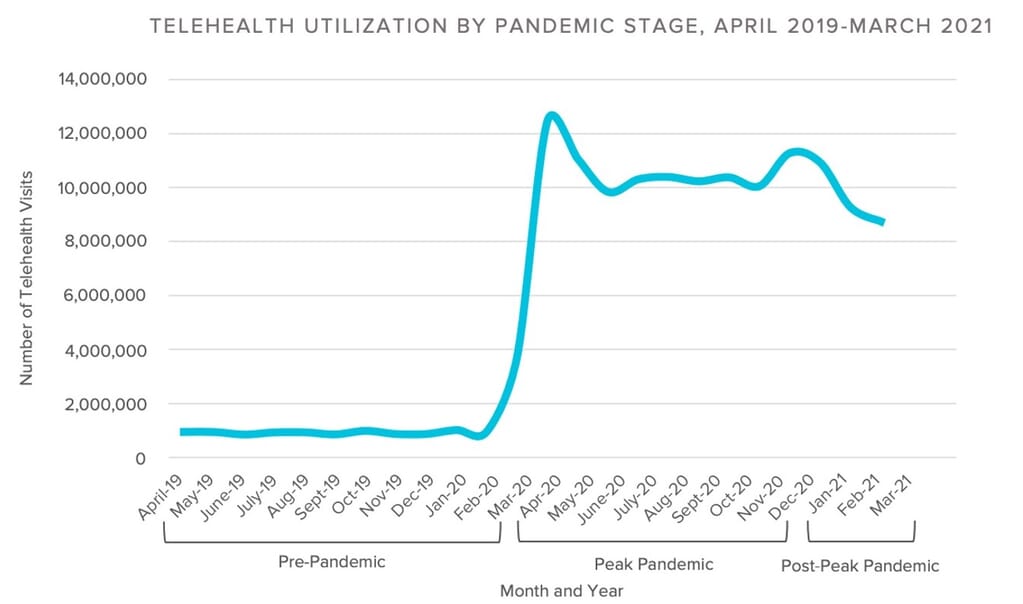A new report by Trilliant Health breaks down the decline in telehealth utilization. Their findings were based on over 70 billion medical claims data representing 309 million patients across all 50 states, including private insurance and Medicare claims. (via Emarketer.com)
Here’s a breakdown of some key stats:
- Telehealth use fell 37% from pandemic highs to the end of Q1’ 2021.
- Most telehealth visits are accounted for by a small percent of total US adults. Around 38 million US adults (not including Medicare beneficiaries) generated 96 million telehealth visits during the pandemic.
- Mental health has been, and will continue to be, a key driver of telehealth demand. 35% of all telehealth visits were for mental health conditions, which is more than the next five leading drivers combined.
- 80% of consumers say they’d be willing to use home care models (like hospital at home schemes) if they were covered by insurance.




